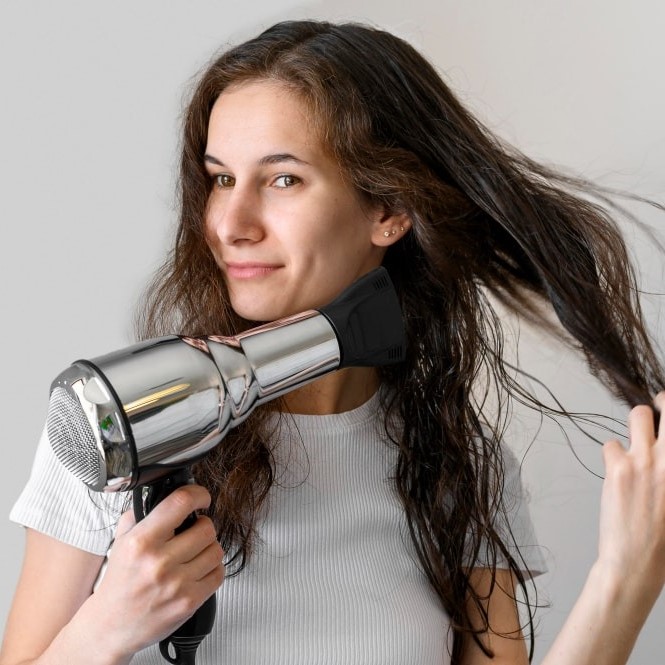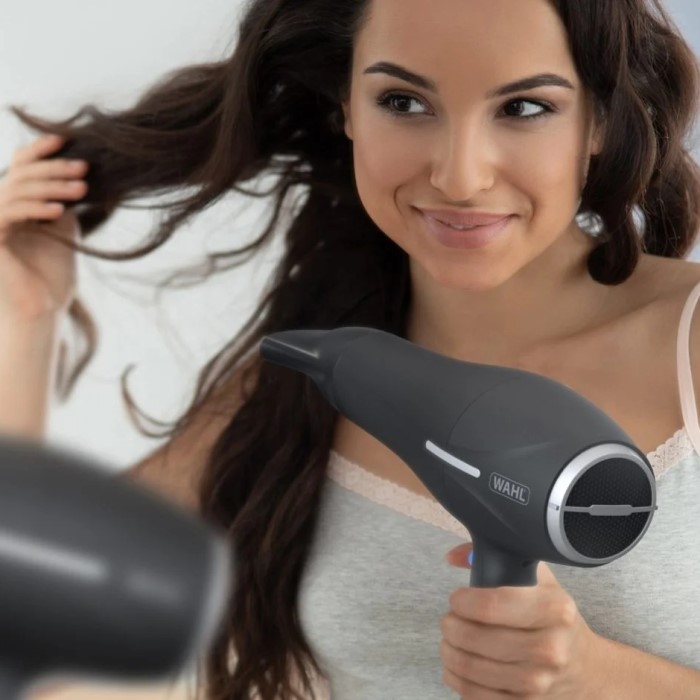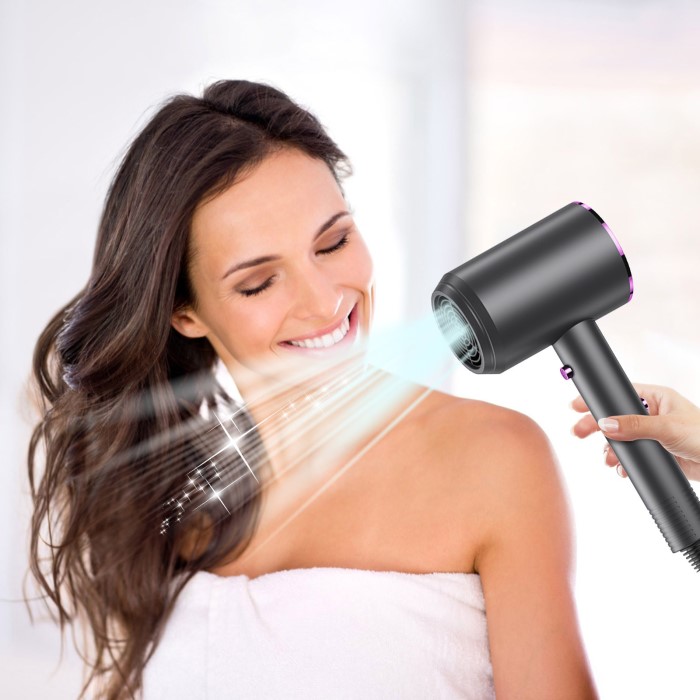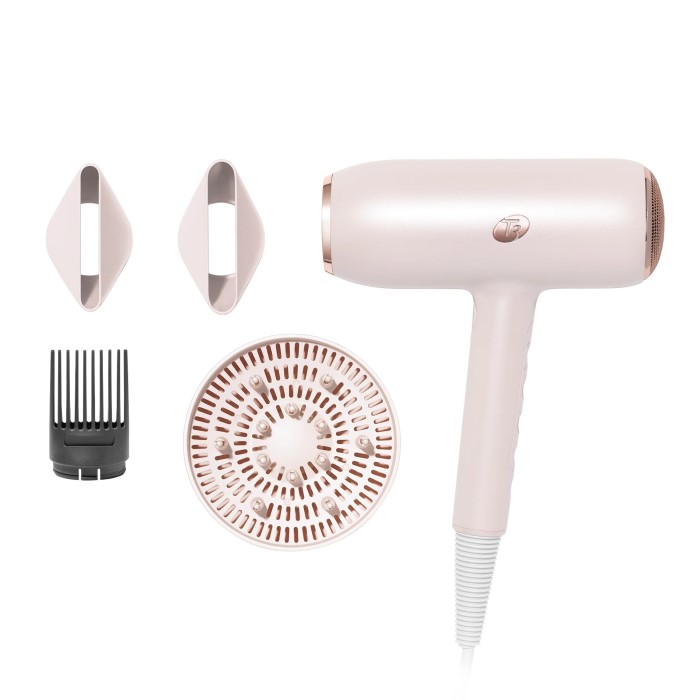Introduction
When it comes to styling your hair, selecting the appropriate hair dryer temperature range can make all the difference. The right settings not only affect how effectively you can dry your hair but also play a significant role in maintaining its health and shine. With many heat levels available, it’s essential to understand which temperatures are ideal for various hair types. In this comprehensive guide, we will explore the significance of hair dryer temperature ranges, provide insights on how to choose the best settings for your unique hair type, and share tips for optimal hair health.
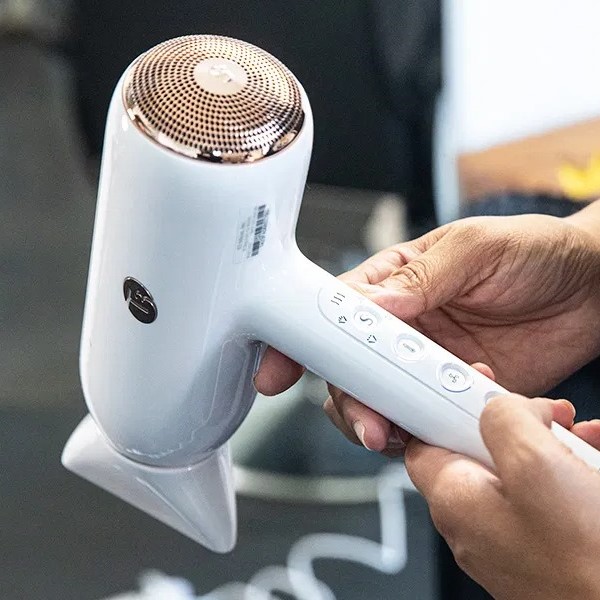
Why Temperature Matters When Using a Hair Dryer
Using the right temperature while drying your hair is essential for maintaining its health. Excessive heat can cause damage, while a controlled temperature can enhance styling results. Here’s a closer look at why temperature matters.
Effects of Heat on Hair Health
High temperatures can strip moisture from your hair, making it dry and brittle. Prolonged exposure to heat can weaken the hair shaft, leading to split ends and breakage. Too much heat can also damage the cuticle layer, which protects the hair from external factors. By selecting the right hair dryer temperature range, you can minimize these risks.
Importance of Temperature Control for Styling
Temperature plays a key role in achieving various hairstyles. Lower temperatures are ideal for simple drying. Higher temperatures can help set and shape your hair. A controlled temperature ensures smooth results while reducing the risk of hair damage. Adjustable heat settings let you personalize the drying process based on your hair type and styling needs.
Common Temperature Ranges in Hair Dryers
Knowing the temperature range of your hair dryer is crucial for effective and safe styling. Most hair dryers offer multiple heat settings to cater to different hair types and styling needs. Let’s explore these settings and how they work.
Low, Medium, and High Heat Settings Explained
- Low Heat Settings:
- Ideal for Delicate Hair: Low heat is particularly suitable for fine, thin, or damaged hair, as it minimizes the risk of further damage during drying and styling.
- Everyday Drying: This temperature setting is perfect for daily use, allowing you to dry your hair gently without exposing it to excessive heat.
- Touch-Ups: Low heat can be used effectively for touch-ups, helping to refresh your style without causing stress to the hair.
- Cooling Styled Hair: After achieving your desired style, you can use the low heat setting to cool down your hair, enhancing the hold of your hairstyle.
- Medium Heat Settings:
- Suitable for Normal Hair: Medium heat is ideal for individuals with normal hair types, offering a comfortable balance between efficient drying and maintaining hair health.
- Balance of Efficiency and Health: This setting is designed to reduce the chances of over-drying, ensuring that your hair retains moisture while efficiently working through styling.
- Pre-Styling Wet Hair: Medium heat is also effective for pre-styling damp hair, preparing it for finishing touches and enhancing the overall styling process.
- High Heat Settings:
- Quick Drying for Thick Hair: High heat is beneficial for drying thick or coarse hair quickly, making it a time-efficient option for those with thicker strands.
- Intense Styling: This setting is perfect for more intense styling techniques, such as curling or straightening, where higher temperatures facilitate better results.
- Use with Caution: While high heat can be effective, it should be used sparingly and with care to avoid overheating and potentially damaging the hair.
- Brief Application Recommended: Due to the intense nature of high heat, it’s advisable to use it briefly to minimize the risk of heat-related damage to your hair.
Choosing the right setting helps maintain your hair’s natural moisture while achieving the desired result.
Differences Between Ionic and Regular Hair Dryers
- Ionic Hair Dryers: These emit negative ions to break down water molecules, speeding up drying. They reduce frizz, leaving hair smooth and sleek. Ionic dryers work well for thick, frizzy, or wavy hair types. However, they may flatten fine hair due to their efficiency.
- Regular Hair Dryers: Regular dryers use hot air alone to evaporate moisture. They are versatile for all hair types but may take longer to dry hair. They often lack the frizz-control benefits of ionic models.
Understanding these features ensures you select a dryer that suits your hair type and protects it from damage. Combining the appropriate heat setting with your dryer type delivers the best results for healthy, styled hair.
Ideal Temperature for Different Hair Types
Choosing the right hair dryer temperature depends on your hair type. Using the wrong setting can damage hair. Let’s explore the ideal temperature ranges for various hair types.
Fine and Thin Hair
Fine and thin hair is delicate and prone to damage. Use a low heat setting below 150°F. This prevents dryness and breakage. Avoid high temperatures as they can weaken the hair shaft. For best results, pair low heat with a gentle airflow setting.
Thick and Coarse Hair
Thick and coarse hair requires higher temperatures for effective drying. Opt for heat settings between 200°F and 250°F. These temperatures help speed up drying and styling. Avoid leaving the dryer on one spot for too long. Use a nozzle attachment for even heat distribution.
Wavy, Curly, and Natural Hair
Wavy, curly, and natural hair needs controlled heat to preserve texture. Medium heat, around 175°F to 200°F, works best. Combine medium heat with a diffuser attachment to enhance natural curls. High temperatures can disrupt curl patterns and cause frizz. Always finish with a cool shot to lock in moisture and reduce frizz.
How to Choose the Best Temperature Setting
Selecting the right hair dryer temperature setting is essential for protecting your hair. By matching heat levels to your hair’s needs, you can achieve great styles without damage. Let’s discuss the key factors to consider and how to balance heat with airflow effectively.
Factors to Consider When Selecting Heat Levels
- Hair Type Matters: Your hair type dictates the ideal heat setting. Fine hair needs low heat, while thicker hair benefits from higher levels.
- Hair Condition: Damaged or chemically-treated hair should be dried with low to medium heat. This avoids further stress.
- Styling Goals: If you’re styling curls or sleek looks, higher heat might help. For general drying, stick to lower settings.
- Hair Dryer Features: Check if your dryer includes adjustable settings or advanced technology. These improve control and reduce risks.
- External Conditions: Humid or dry weather can influence your drying needs. Adjust heat accordingly for best results.
Balancing Heat and Airflow for Best Results
Start with Medium Airflow:
- Begin the drying process by selecting a medium heat setting.
- This combination of moderate heat and steady airflow helps to prevent damage to delicate areas of the hair, such as the ends.
- Using medium airflow ensures a balanced approach, allowing for effective drying without excessive heat exposure that could lead to dryness or breakage.
Use Cool Settings for Finishing:
- After drying, switch to a cool air setting to finish your hairstyle.
- The cool air helps to smooth down the hair cuticles, resulting in a shinier and more polished look.
- It also locks in the style you’ve created, helping it to last longer throughout the day.
- Always remember to give your hair a final burst of cool air before completing your drying routine for optimal results.
Employ Tools Wisely:
- Take advantage of the various attachments available with your hair dryer, such as nozzles and diffusers.
- Nozzles can be used to focus heat on specific areas, allowing for more targeted drying and styling.
- Diffusers are particularly useful for preserving natural curls and waves, helping to distribute airflow evenly without causing frizz.
- Using these tools strategically can enhance your styling results and protect your hair’s natural texture.
Avoid Overexposure:
- To minimize the risk of heat damage, keep the hair dryer in motion while drying your hair.
- Never concentrate the heat on one section for extended periods; instead, move the dryer around constantly.
- Limit the focus on any one spot to just a few seconds to ensure that all areas get an even distribution of heat.
- This practice helps to prevent overheating and ensures that your hair remains healthy and vibrant.
By adjusting heat and airflow carefully, you can maintain healthy, stylish hair. Always prioritize your hair’s condition and use tools designed for protection.
Tips for Safe Hair Dryer Usage
Proper usage of your hair dryer is essential to maintain healthy, beautiful hair. Following safety tips minimizes damage and improves styling results. Let’s look at practical ways to prevent heat damage and the importance of protective products.
Preventing Heat Damage
- Keep the Dryer Moving: Avoid focusing heat on one spot for long periods. Constant motion prevents hair stress.
- Use the Right Heat Settings: Match the temperature to your hair type. Experiment to find a balance.
- Limit Drying Time: Minimize how long you expose hair to heat to reduce the risk of dryness.
- Maintain Distance: Hold the dryer about 6 to 8 inches away from your hair for safer drying.
- Cool Down When Needed: Switch to the cool setting near the end to seal cuticles and lock in moisture.
Using Protective Products for Your Hair
- Apply Heat Protectant: Use sprays or creams to shield hair from high temperatures.
- Pick Moisturizing Products: Dry hair absorbs heat faster. Use deep conditioners to ensure moisture retention.
- Avoid Overuse: Excessive styling increases risks. Limit use of heat tools to twice a week or less.
- Repair Damaged Hair: Regular use of reparative treatments helps minimize harm and maintain hair strength.
- Check for Natural Ingredients: Ensure products contain natural oils or extracts for better protection.
These tips ensure your hair remains healthy and manageable, even when using heat styling tools. Preventing heat damage and adding protective layers create beautiful results without compromising hair quality.
Advanced Technologies in Modern Hair Dryers
Modern hair dryers use advanced technologies to enhance performance and protect hair health. These features provide faster drying, better styling, and reduced damage for users.
Innovations in Temperature Regulation
- Microprocessors for Precise Control: Microprocessors adjust heat levels based on air temperature. These ensure consistent heat and prevent overheating.
- Sensors for Continuous Monitoring: Built-in sensors monitor temperature during use. They detect changes and adjust heat instantly.
- Adjustable Settings: Advanced dryers offer more heat and airflow options. These allow users to customize settings for their hair type and styling needs.
- Cool Shot Technology: Cool shot buttons provide bursts of cold air. This locks hairstyles, smooths hair, and seals in moisture.
- Automatic Power Regulation: Some dryers auto-regulate power to maintain safe temperature levels. This prevents hair damage and overheating.
Benefits of Infrared and Ceramic Technology
Infrared Drying:
- Infrared technology harnesses gentle heat to dry hair.
- It operates by heating the hair strands from the inside out, leading to faster drying times.
- This method is beneficial for minimizing heat damage, as it targets the hair’s core rather than just the surface.
Even Heat Distribution:
- The use of ceramic materials in hair dryers ensures a consistent flow of heat across the entire surface of the hair.
- This even distribution helps to prevent the formation of hot spots, which can lead to uneven drying and potential damage.
- By mitigating the risk of overexposure to heat, ceramic technology protects the hair from burns and other heat-related issues.
Reduced Frizz and Static:
- Both infrared and ceramic technologies work effectively to control frizz in hair.
- They help eliminate static electricity, which can make hair look unruly and unkempt.
- The result is smoother, more manageable hair that appears shinier and healthier.
Preserves Moisture:
- One of the advantages of using ceramic and infrared technology is their ability to maintain the natural moisture levels in hair.
- This is crucial in preventing hair from becoming dry and brittle, which can lead to breakage.
- By preserving moisture, the hair remains soft, hydrated, and vibrant.
Suitable for All Hair Types:
- The technologies employed in these hair dryers are versatile, making them ideal for various hair types.
- Whether hair is thin, thick, curly, or damaged, the gentle yet effective nature of ceramic and infrared drying caters to all needs.
- Users can enjoy the benefits of these advanced drying methods, regardless of their specific hair texture or condition.
Modern hair dryers combine precision and technology to deliver efficient styling. The advanced features ensure fast drying while protecting hair from unnecessary damage.
Conclusion
Understanding the hair dryer temperature range is essential for maintaining healthy hair while achieving desired styles. By selecting the right temperatures based on your hair type, utilizing advanced dryer technology, and following effective techniques, you can enhance your hair drying and styling experience. The time you invest in choosing and using the right tools will pay off in vibrant, healthy hair.
Embrace the capabilities of modern hair dryers and prioritize your hair’s health when styling. With these tips in mind, you’ll find the best temperature settings that cater to your unique needs and promote beautiful results.
